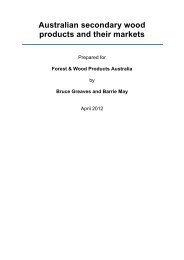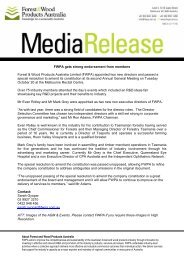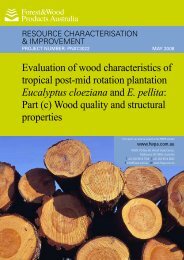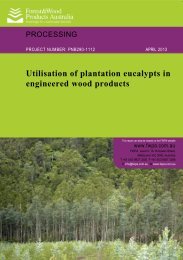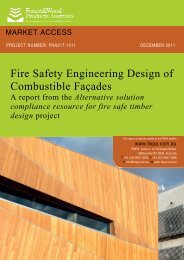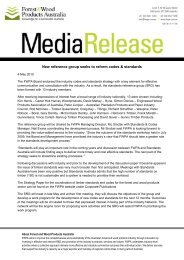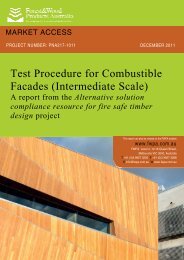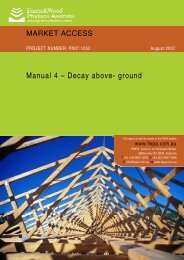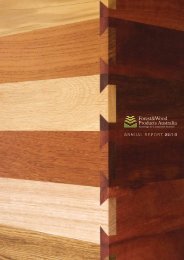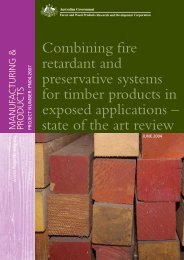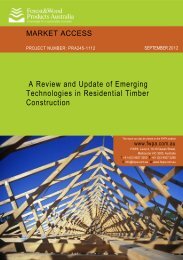guide to the specification, installation and use of preservative treated ...
guide to the specification, installation and use of preservative treated ...
guide to the specification, installation and use of preservative treated ...
You also want an ePaper? Increase the reach of your titles
YUMPU automatically turns print PDFs into web optimized ePapers that Google loves.
GUIDE TO THE SPECIFICATION, INSTALLATION<br />
AND USE OF PRESERVATIVE TREATED<br />
ENGINEERED WOOD PRODUCTS<br />
For each Hazard Class, <strong>the</strong>re can be a range <strong>of</strong> <strong>preservative</strong> types <strong>and</strong> modes <strong>of</strong> treatment permitted<br />
under AS/NZS 1604 series. Each combination does not necessarily confer equivalent performance.<br />
For example, H3 CCA <strong>treated</strong> s<strong>of</strong>twood will generally be regarded as more robust than H3 light<br />
organic solvent <strong>preservative</strong> <strong>treated</strong> s<strong>of</strong>twood, in terms <strong>of</strong> treatment durability.<br />
Treated EWPs<br />
Detailed <strong>specification</strong>s for <strong>the</strong> <strong>preservative</strong> treatment <strong>of</strong> EWPs for each <strong>of</strong> <strong>the</strong> six hazard Classes are<br />
given in <strong>the</strong> AS/NZS 1604 series <strong>and</strong> in relevant State legislation. The information <strong>of</strong> particular<br />
relevance <strong>to</strong> <strong>treated</strong> EWP suppliers including <strong>the</strong> current <strong>preservative</strong> types, designations <strong>and</strong><br />
retentions (%m/m) is also provided for information in Appendix A in Tables A1 <strong>to</strong> A6. General<br />
information about <strong>preservative</strong> treatments is provided below for designers, specifiers <strong>and</strong> <strong>use</strong>rs <strong>of</strong><br />
<strong>treated</strong> EWPs.<br />
H1 products<br />
H1 products are required <strong>to</strong> resist attack from Lyctid borers experienced in inside, above-ground<br />
exposure. All EWPs are generally available <strong>to</strong> suit H1 Hazard Class applications by means <strong>of</strong> ei<strong>the</strong>r<br />
natural resistance or by <strong>preservative</strong> treatment.<br />
All Lyctus-susceptible hardwood sapwood must be <strong>treated</strong>. In <strong>the</strong> case <strong>of</strong> OSB <strong>and</strong> particleboard <strong>the</strong><br />
fibre particles should be



